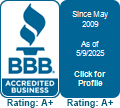
To avoid rising energy costs and work toward a more sustainable life, many homeowners are looking for ways to enjoy the same standards of comfort while reducing utility bills. Included in the Inflation Reduction Act, federal tax credits are available for upgrading to more efficient HVAC systems, such as air conditioners. These credits offer significant savings, as long as the homeowners select qualifying equipment and submit the right paperwork.
If you’re worried about a long, complicated process, maybe we can help! Select Comfort Systems hopes this guide will provide all the information necessary to take full advantage of HVAC tax credits this year. Here’s what you should know.
How Do These Tax Credits Work?
These valuable tax credits for energy-efficient home improvements are just one portion of the recent Inflation Reduction Act. Energy costs affect everyone, so helping homeowners upgrade to higher efficiency utilities can benefit everyone. The primary goal of these credits is to help pay for high efficiency HVAC equipment and other projects. The two we’ll cover are the Energy Efficiency Home Improvement Credit and the Residential Clean Energy Credit.
Don’t forget, to be eligible for tax credits, you’ll have to fill out IRS Form 5695. Additionally, this form has to be submitted for the same tax year any upgrades were installed, not purchased.
Energy Efficiency Home Improvement Credit
Through 2032, the Energy Efficiency Home Improvement Credit provides up to $3,200 annually for installing higher efficiency home upgrades. This can be up to 30% of the total project’s cost. It's important to note in order to receive the maximum amount, it means making severel investments. For example, you’ll save up to $2,000 for installing a higher efficiency heat pump. This can be combined with the remaining $1,200 in credits for other eligible upgrades made within the tax year.
While heat pumps are a great use of the program, high-efficiency furnaces, air conditioners, boilers, and other HVAC systems are still eligible for this tax credit. You should confirm that your choice’s energy efficiency rating is sufficient to qualify.
Exploring the Residential Clean Energy Credit
The Residential Clean Energy Credit provides 30% savings on a number of other residential clean energy efficiency projects. Eligibility only applies to homeowners looking for new clean energy solutions for their home. While the Home Improvement Credit highlights utilities and HVAC systems, this credit is more about renewable energy sources like solar and wind energy.
Some key details of this tax credit include the requirement that installation must occur between 2022 and 2032. But at the same time, homeowners can keep the excess credit to reduce future taxes. This is a great way to soften the entry into investing in clean energy.
Additional Qualifications for Energy Tax Credits
Because HVAC systems are one of the biggest portions of your monthly energy costs, these tax credits offer more access to the most energy-efficient options. But home energy efficiency can be improved in many other ways. Apart from the previously listed HVAC upgrades, {you could also choose|other eligible items include|you also have access to:
- Energy-saving heat pump water heating systems
- Electrical panel upgrades
- New electrical wiring
- Enhancements to insulation, air sealing, and ventilation
- Energy-efficient cooking appliances like stoves, cooktops, and ovens
- Efficient heat pump clothes drying solutions
- High-efficiency water boilers
Like the HVAC systems, you’ll need to check that your chosen products meet the required energy efficiency ratings.
Three Tips for Making the Most of 2024 HVAC Tax Credits
While any one of those upgrades can improve your home’s energy efficiency, a little planning will ensure they offer the most long-term benefits. Get the most from your HVAC tax credits with the following three tips:
- Conduct a home energy audit to identify impactful upgrades. Rely on professional HVAC assessments for crucial advice.
- Improve your home's thermal efficiency with better windows and doors.
- Look into rebates for clean energy projects from utilities. Renewable sources like solar, wind, and geothermal contribute to community power grid sustainability.
- Don’t forget financing options from local service companies, which can help reduce costs even more.
Secure Your 2024 HVAC Credits with Help from Select Comfort Systems
Partner with local HVAC professionals like Select Comfort Systems for help with home energy audits and new installation projects. Our seasoned installers will deliver everything you need for a more energy-efficient home.

